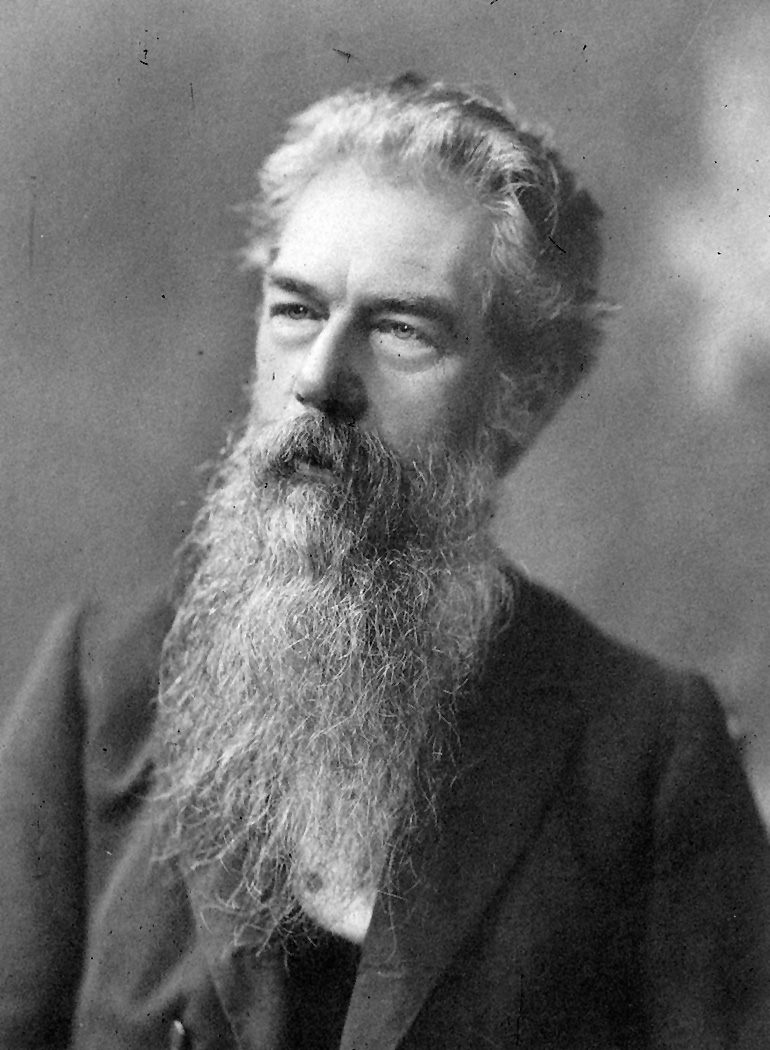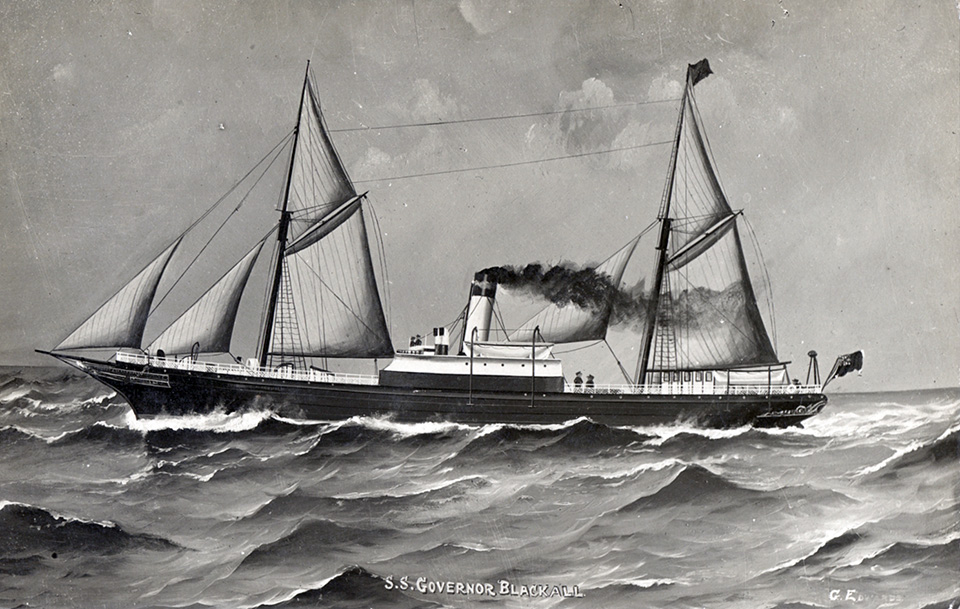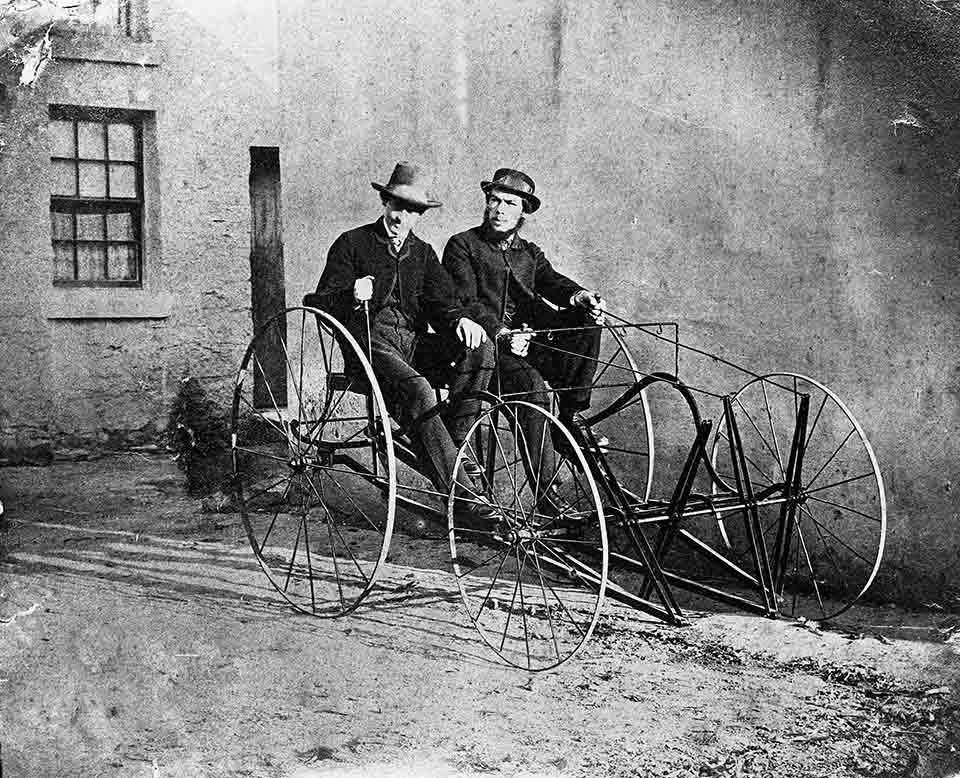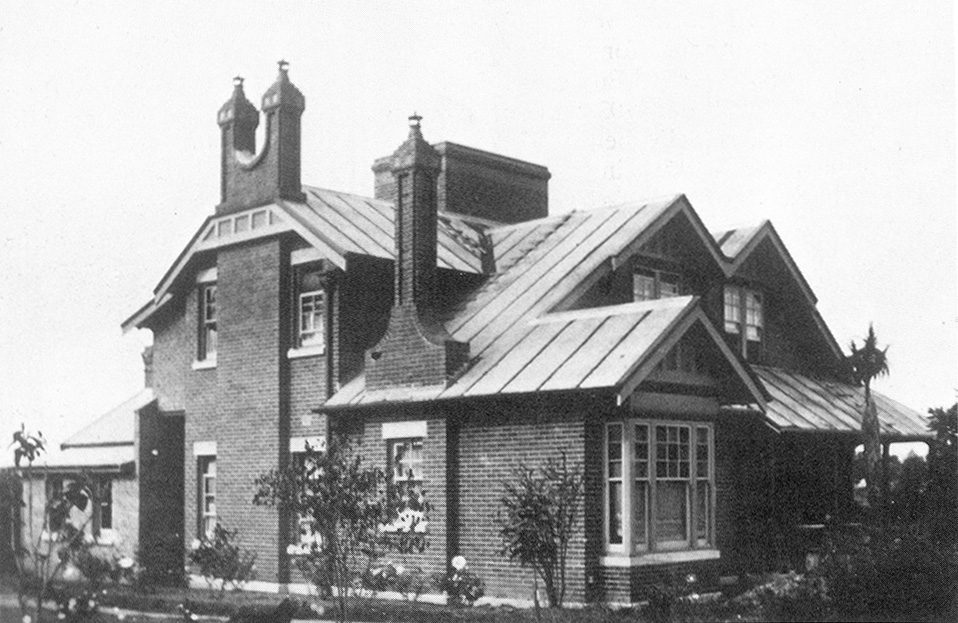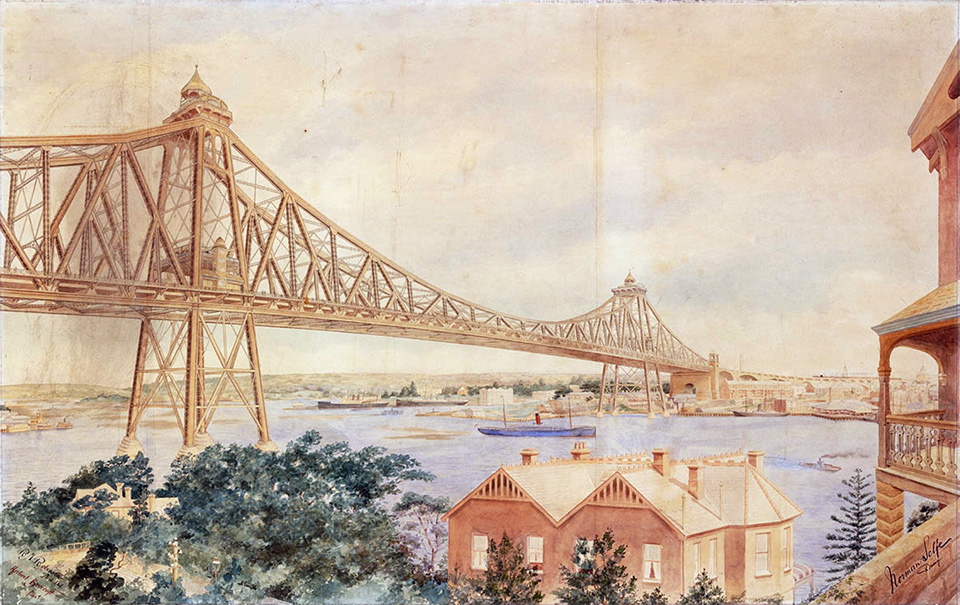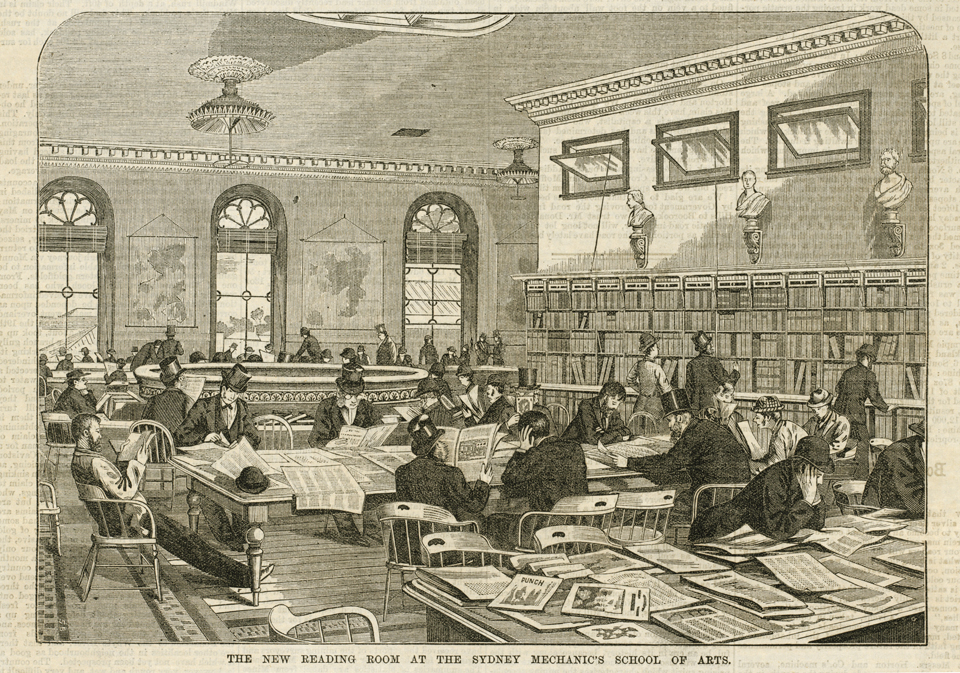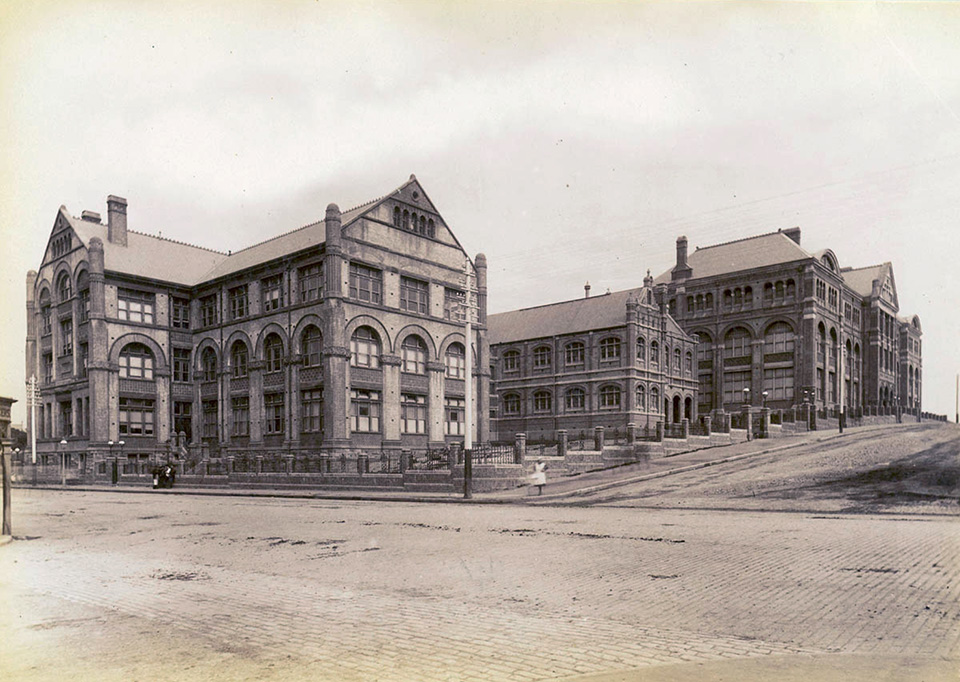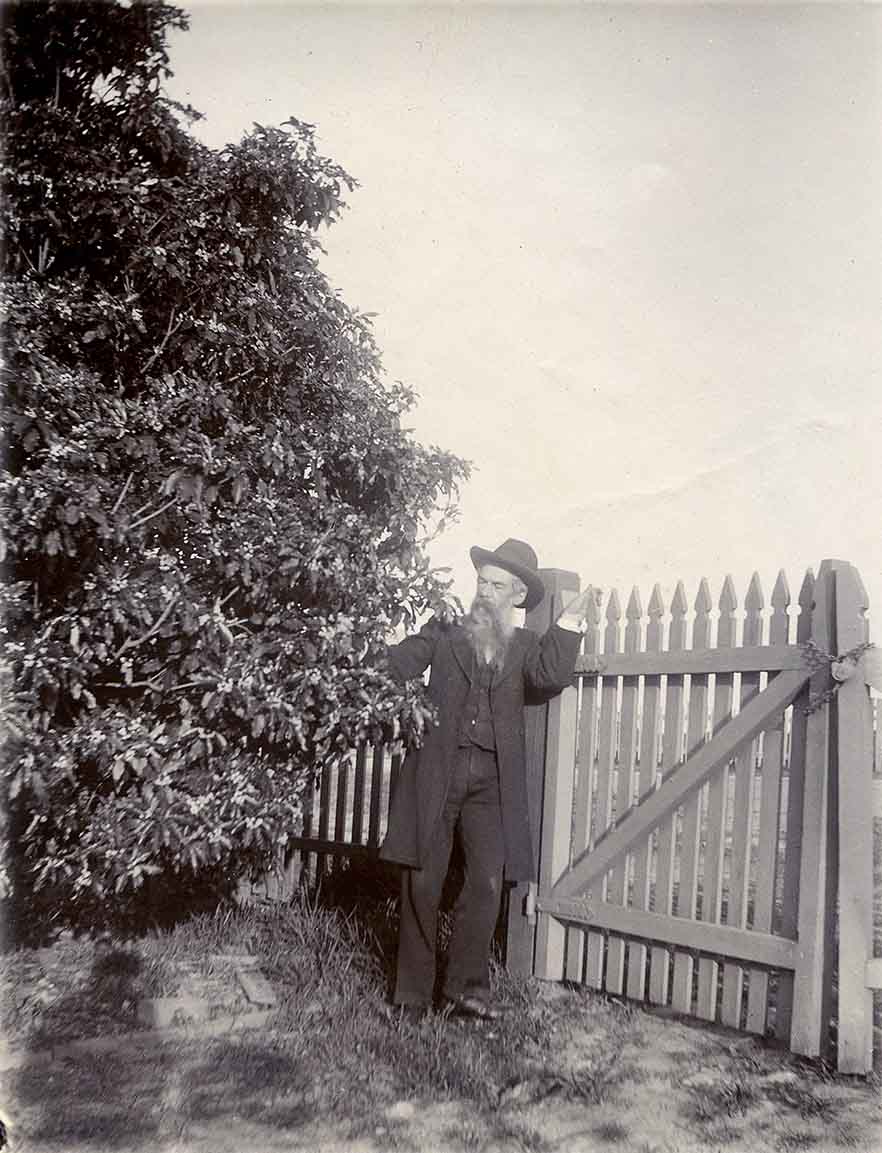The Dictionary of Sydney was archived in 2021.
Selfe, Norman
Citation
Persistent URL for this entry
To cite this entry in text
To cite this entry in a Wikipedia footnote citation
To cite this entry as a Wikipedia External link
Selfe, Norman
[media]Norman Selfe was an engineer, naval architect, inventor, urban visionary and controversial advocate of technical education. Today, he is best remembered in the name of the suburb of Normanhurst, where his grand house Gilligaloola still stands. But decades before the existing Harbour Bridge was built, Sydney came close to building a Selfe-designed steel cantilever bridge across the harbour with its northern foot in McMahons Point. When he wasn't designing bridges, docks, boats, precision machinery and new transport schemes for Sydney, Selfe was energetically involved in organisations ranging from the Royal Society of New South Wales to the Sydney Mechanics' School of Arts; the Australian Historical Society to the Central Federation League. As President of the Board of Technical Education, Norman Selfe fought passionately for the establishment of an independent system of technical education, to serve the needs of a rapidly industrialising society. Selfe's strenuous efforts in a number of causes went unrewarded during his life, but formed the basis of innovations later realised.
Apprentice engineer
Norman Selfe was 15 years old when he arrived with his family at Sydney's Semi-circular Quay in January 1855. [1] Immediately his career as an engineer began. Selfe was apprenticed to the ironmaster Peter Nicol Russell, at whose firm he became chief draughtsman even before he finished his articles of apprenticeship, remaining there until 1864. In 1859, when PN Russell & Co expanded to a site in Barker Street near the head of Darling Harbour, young Norman drew up plans for the new works and the wharf, and oversaw their construction. In an address to the Engineering Section of the Royal Society of New South Wales in 1900, Selfe recalled his work for Russell's:
While there [I] prepared plans for numbers of flour mills, and for the first ice-making machines, designing machinery for the multifarious requirements of colonial industries, many of which (such as sheep-washing and boiling down) no longer exist on the old lines. [2]
At PN Russell & Co, he made several innovations in the design and construction of dredges for 'deeping our harbours and rivers' – something of crucial importance to industry in early Sydney. He later recalled the success of Pluto, one of his dredges purchased by the government:
[I]n this there were several novelties introduced, and among them, the ladder was lifted by hydraulic power instead of by a chain from a winch… The day of the official trial… was a proud one for [me], because during the course of the little festivities which followed their formal approval and official acceptance, [head engineer] Mr Dunlop pointedly remarked that 'as she was all right, the credit must be given to his boy in the drawing office'. [3]
Inventor and all-round engineer
'The boy' was further recognised in 1861 when leading British journal The Engineer published illustrations of Selfe's designs for refrigerating machines. [media]One of these machines was installed in Sydney's first ice-works, behind the Royal Hotel in George Street – one of the earliest commercial refrigerating plants in the world. The decades following Selfe's arrival in Australia were watershed years in the development of refrigeration technology, and Selfe was closely involved with its evolution. The impact of refrigeration on the colony and the global food trade cannot be overestimated. It revolutionised farming, allowing the expansion of settlement, and made possible the export of meat and dairy products. In Sydney itself, refrigeration changed commercial practices and led to the eventual demise of city dairies. Selfe became an international authority on refrigeration engineering, writing articles and eventually a definitive textbook on the subject, published in America in 1900. [4]
After PN Russell, Selfe went into partnership with his former boss James Dunlop. They designed and built major installations for the Australasian Mineral Oil Company, the Western Kerosene Oil Company and the Australian Gas Light Company. [5]
[media]In 1869 Norman Selfe was given the senior role of chief engineer and draughtsman at Mort's Dock and Engineering Company at Balmain – an impressive and challenging job for a young man, even one with Selfe's tremendous ability and energy. [6] While at Mort's, he designed the whole of the machinery for SS Governor Blackall, built for the Queensland government in 1871. [7]
After leaving Mort's in 1877, Selfe ran a private practice as a consulting engineer with a reputation for versatility and originality. Until his overseas trip in 1884–5, he operated out of an office at 141 Pitt Street. When he returned he set up a new office in Lloyd's Chambers at 348 George Street. In 1891 new rooms were taken at 279 George Street, where he operated his consultancy until his death in 1911.
All told, he designed the hulls or the machinery for some 50 steam vessels, including two torpedo boats for the New South Wales government, which he claimed were for 20 years the fastest boats on the harbour, [8] and SS Wallaby, Sydney Harbour's first double-ended screw ferry. [9] [media]He designed the first concrete quay wall in Sydney Harbour, and many wharves for deep-sea vessels. He planned mills, waterworks and pumping stations, including the high-level pumps at the reservoir on Crown Street. He made major electric light installations at the Anthony Hordern & Sons department store and the legendary Hotel Australia, and provided a hot water system for the hotel too. [10] He designed machinery for factories, dairies and railways, including, in 1878, the incline of what is now the Scenic Railway at Katoomba. Its original purpose was the transportation of coal from the mines in the valley to the cliff-top, and it remains to this day the world's steepest incline. [11]
Running in the family
Selfe had come from a long line of inventors and engineers. Both sides of his family came from Kingston-upon-Thames, near London, where one grandfather had owned a plumbing and engineering works. [12] His father Henry was a plumber and inventor, whose high-pressure fire-fighting hose was displayed at the Great Exhibition in London's Crystal Palace in 1851. [13] In the 1870s, Norman's cousin Edward Muggeridge would achieve global fame and notoriety in the United States as the photography innovator Edward Muybridge. [14]
Norman's ambitious parents had [media]high expectations of all three of their children, particularly Norman, whose extraordinary ability in mathematics and draughtsmanship was apparent from a young age. One of the reasons they emigrated to New South Wales was to enable Norman and his brother Harry to undertake engineering apprenticeships without having to pay the heavy premium required by large firms in London. [15] Sydney did not disappoint. The rapidly developing metropolis was hungry for the talents of engineers to realise its potential as a centre of shipping and industry.
[media]When Norman scored the plum job at Mort's, he brought his family with him from the Rocks to live at Balmain. Selfe bought waterfront land and built twin terraces Normanton and Maybank, which still stand at 21 and 23 Wharf Road, Birchgrove. It's likely that Norman shared Normanton with his widowed mother. Next door lived Norman's brother Harry, his sister Maybanke and his brother-in-law Edmund Wolstenholme. [16]
Norman Selfe was a supportive brother, both emotionally and materially. His sister Maybanke bore seven children to her first husband Edmund, four of whom died as infants. According to the death certificates, each was buried at Balmain Cemetery in the presence of Edmund and Norman. There was also some financial support from Norman after Maybanke's marriage came to an end. [17] Maybanke Wolstenholme – later known as Maybanke Anderson – earned fame in her own right as a prominent suffragist and pioneer of education for women and girls. Much later, brother and sister campaigned together for education reform.
In 1872, Norman married Emily Ann Booth, the daughter of John Booth, a well known ship-builder and Balmain's first mayor. They lived for many years at Rockleigh in Donnelly Street, Balmain. The house has since been demolished. In 1884 their daughter Rhoda Jane was born, followed by Norma Catherine in 1888. In 1885 Selfe bought land in Ashfield and designed a grand house called Amesbury. Built around 1888 to honour the centenary of the colony, Amesbury still stands at 78 Alt Street, complete with terracotta lyrebird reliefs by artist Lucien Henry on the front wall, and a tower purpose-built for Selfe to pursue his hobby of astronomy. [18] As children, Rhoda and Norma attended their Aunt Maybanke's school in Dulwich Hill. [19] As adults, they trained in Italy with educator Maria Montessori, returning to Sydney to open a Montessori school of their own at Ashfield, called Warwick.
[media]Around 1894 the family moved once again, this time to Hornsby shire, where a new Selfe-designed house, Gilligaloola, was built on 11 acres (4.5 hectares) purchased by Selfe 10 years earlier. Gilligaloola, at 82 Pennant Hills Road, is still a local landmark, with its distinctive tower and twin chimneys. [20] Norman was a committed citizen, and a natural spokesman for the local community, to the extent that when the railways needed a name for the locality, the community chose 'Normanhurst' (though Norman himself felt that 'St Normans' would have been 'much more elegant and suggestive'!). [21]
In 1906, four years after the death of his first wife, Selfe married Marion Bolton at St Philip's Anglican church, Sydney.
Improving Sydney
[media]Norman Selfe's capacity for invention was not limited to the realm of machinery – he was also an energetic civic and urban reformer. He was fired with high hopes for Sydney, as these words from 1900 show:
Every well wisher of Sydney, who sees and understands what magnificent latent possibilities there are before her must hope that she will for all time be the Queen City of the Southern Hemisphere; and that the new century will open finding old ways departed from, and a glorious new era of progress, prosperity, morality and cleanliness installed in our midst. When that day arrives, we shall look back with curiosity and wonder at the continued blindness and negligence from which our city – so highly gifted by nature – had suffered so long. [22]
From the time of his return in 1886 from two years' travel in the United States and Europe, he campaigned for improvements to the city of Sydney. These included proposals for a city railway loop, redevelopment of the Rocks and a bridge to the north shore. [23] He published plans and proposals, and produced major articles with titles like 'Sydney: past, present and possible' [24] and 'Sydney and its institutions, as they are, and might be from an engineer's point of view'. [25]
[media]In 1887 Selfe published proposals for a city underground railway, with stations at Wynyard, the Rocks and Circular Quay, and a loop to Woolloomooloo and the eastern suburbs. The proposal included a bridge across Sydney harbour for trains, vehicles and pedestrians. He presented these schemes to the Royal Commission on City and Suburban Railways in 1890. But nothing resulted from this Royal Commission, largely because the 1890s depression brought public works initiatives to a standstill. [26]
In 1908-09 he served as one of 11 expert commissioners to the Royal Commission for the Improvement of the City of Sydney and its Suburbs. Selfe's proposals included an overhead railway station at Circular Quay and major landscaping works at Belmore Park opposite Central Railway Station. [27] Selfe didn't live to see it, but both of these visions were later realised. [28]
Bridge designer
[media]By the late 1890s a harbour crossing and a city railway extension were again on the agenda. The Lyne government committed to building the new Central Railway Station, and organised a worldwide competition for the design and construction of a harbour bridge. Selfe submitted a design for a suspension bridge and won the second prize of £500. In 1902, when the outcome of the first competition became mired in controversy, Selfe won a second competition outright, with a design for a steel cantilever bridge. The selection board were unanimous, commenting that 'the structural lines are correct and in true proportion, and … the outline is graceful'. [29]
[media]But Norman Selfe's version of a harbour bridge for Sydney, stretching from Dawes Point to McMahons Point, was destined to remain on paper. Construction never commenced, because of an economic slowdown and a change of government in 1904. Much to Selfe's outrage, the Department of Public Works nevertheless kept his calculations and drawings, and even copied and printed them. Eventually in 1907, the department contacted Selfe and asked him to pick up his drawings, still refusing to return the calculations. Selfe never received the £1,100 prize, nor was he paid for his work, which he estimated to be worth over £20,000. [30]
Of all the items in the Mitchell Library relating to Norman Selfe – photographs, articles, plans, diagrams, letters and newspaper clippings – perhaps the most revealing is his huge collection of postcards featuring bridges from all over the world. [31] Some have affectionate notes to Norman from friends and relatives, sent from Japan, Italy, New Zealand, Switzerland. Others are blank, perhaps picked up by Norman himself as he travelled through America, Britain and continental Europe in 1884–85, visiting engineering works and technical education facilities, searching for new ideas to bring back to Sydney. All the world's bridges were thus grist to the mill for the great engineer when he set his mind to the task of connecting Sydney with its north shore.
In 1908, Selfe dusted off his precious bridge plans for Sydney once more, presenting new proposals based upon the old design to the Royal Commission on Communication between Sydney and North Sydney. Alas, the commissioners preferred a tunnel scheme this time. But again, no work proceeded. Agitation for a bridge was renewed with the election of a Labor government in 1910. But with Selfe's death in 1911, it was time for a new generation of bridge builders. In 1912 the government appointed JJC Bradfield as Engineer-In-Chief of Sydney Harbour Bridge and City Transit. Gradually, over the following decades, versions of Selfe's much earlier-articulated visions for a city circle railway link, and a bridge to the north shore, were realised. Selfe's contribution received little public or formal recognition. [32]
History matters
Norman Selfe was interested in Australian history at a time when few others were. He was founding vice-president of the Australian Historical Society in 1901, and remained actively involved in the society for 10 years, despite what he called 'the evident lack of interest... taken in the proceedings of the Society' by the general public in the early years. [33] The society got off to a shaky start, with 'miserable' attendance of lectures and meetings, where early papers delivered by Selfe included 'A century of Sydney Cove' [34] and 'Some notes on the Sydney windmills'. [35] Slowly, though, interest increased, and by 1905, membership had reached 100. [36] Now known as the Royal Australian Historical Society, housed in a grand Victorian town house on Macquarie Street, the organisation is Australia's oldest historical society, and Norman Selfe is celebrated as one of its pioneers.
Re-engineering technical education
Norman Selfe was a key figure in the history of technical education in New South Wales. He advocated a more utilitarian and less literary education system, to produce a skilled workforce that could realise Australia's potential as an efficient industrial state. He was utopian in his vision:
There is no doubt that it is on the work of tools directed by brains that the future of Australia depends more than anything else. With tools our Australian deserts may be turned into gardens… They will pluck the hidden treasure from the bowels of the earth, enable us to soar in the air, or explore the depths of the water. They will weave a network of communication over our island continent, dot it with the homes of a happy people, and minister to our wants in providing not only the necessities and comforts of life, but the most refined luxuries that are needed to satisfy the novel and exacting wants which arise every day, as the standard of intellectual and technical cultivation is raised and extended among us…' [37]
What was needed was an overhaul of the education system at all levels, from kindergarten to tertiary study. Selfe's concept of technical education encompassed Froebel's kindergarten activities based around play and occupations; the teaching of drawing, manual work and science in schools; and specialised practical training of workmen and professionals in technical colleges. [38] Finally, he argued for the establishment of a new kind of university – an 'Industrial University', less theory-oriented, more concerned with the practical and the useful. [39] He saw technical education as a distinct sphere of education to be administered and delivered by people with practical industry experience, not government officials or traditional teachers.
Teacher and activist
[media]As early as 1865 Selfe was giving regular classes in mechanical drawing to tradesmen at the Sydney Mechanics' School of Arts in Pitt Street. [40] Selfe's class in mechanical drawing was the first technical, vocational offering at the School of Arts, and its popularity led to the introduction of other practical subjects. [41]
With a desperate need in the colony for skilled labour, calls for a formal system of technical education were gathering strength in the 1870s. In 1871, Selfe helped found the Engineering Association of New South Wales. This organisation joined forces with the New South Wales Trades and Labour Council and the Sydney Mechanics' School of Arts, to form the Technical and Working Men's College in 1878. The College operated initially as an agency of the Sydney Mechanics' School of Arts. [42] [media]It occupied premises in Pitt, Sussex and Castlereagh streets and rooms in the Royal Arcade, before moving to Ultimo in 1889. [43]
In 1880, Selfe became vice president of the School of Arts. He supported the school's Working Men's College, but felt more was needed. He rejected the non-technical, non-practical approach of the School of Arts model, campaigning for the establishment of a proper institute of technical education, where instructors would be skilled tradesmen with practical industrial experience. He also pushed for the expansion of technical education facilities through suburbs and regional districts. [44]
In 1883, the government transferred control of the Technical and Working Men's College to a Board of Technical Education, to which Selfe was appointed. The government provided funds to fit out workshops in Kent Street that opened in 1886. [45] This was an initiative driven by Selfe, who had admired the workshop teaching model abroad. It represented a major innovation in technical education in New South Wales. [46]
Many of the board's initiatives were based on observations made abroad by Selfe and board president Edward Combes, or recommendations made by the British Royal Commission into Technical Education of 1881–84. But most of the board's schemes were frustrated by an unresponsive colonial government. [47] Norm Neill argues that the Board caused many of its own problems:
There was a marked lack of unity… Members either resigned or became inactive [and the Board failed] to accept that its autonomy was more nominal than real. Any expansion of technical education was dependent on government funding and governments were unlikely to allocate resources to an organisation unwilling or unable to cooperate. [48]
Norman Selfe was acting president of the Board of Technical Education from 1887 until it was disbanded in 1889. It was a very trying time, as the relationship between the board and the government deteriorated. Selfe vehemently opposed the government taking control of technical education, which is what ultimately happened. He also rejected an alternative proposal that the University should take over. [49] In an address at the annual presentation of prizes at Sydney Technical College in 1887, Selfe alienated the Minister for Public Instruction and others by being openly contemptuous of traditional pursuits of schools and universities:
[T]he whole experience of the past goes to show that the learning of the schools has had little, if anything, to do with the material advancement of the world, and that while it may have produced intellectual giants, subjective teaching has not brought forth those men who have been inventors and manufacturers that have entirely changed the character of our civilisation. [50]
Selfe criticised the classical liberal arts education offered at the University of Sydney as elitist. In his 1888 address to Sydney Technical College students on prize night, he again ruffled feathers when he called for greater diversity of educational opportunities in the colony:
[I]t is not … easy … to see why the general public should pay so many thousands a year to make our future professional men in medicine and law in the colony, to form part of the so-called upper classes, when our 'principles' will not allow us to pay just a little more in order to have, say, our locomotives made here, and when we are doing so very little, proportionately, to train and educate the artisans who make these locomotives, and who belong to a much less wealthy and influential level in society. [51]
Selfe did not win friends by being critical of two powerful institutions, the Department of Public Instruction and Sydney University. [52] In 1889, the government abolished the Board of Technical Education and assumed full control.
Education reformer
In the early years of the new century, education became a major political issue in New South Wales. While Selfe wouldn't be drawn again into the centre of the fray, he supported the efforts of his sister Maybanke and her second husband Francis Anderson towards education reform. [53] Following the Knibbs-Turner Royal Commission into New South Wales Education in 1902, and the appointment of Peter Board as Director of Education in 1905, many of Selfe's ideas for technical education were implemented. [54] Ultimately, in 1949, a separate Department of Technical Education was created, and the New South Wales University of Technology (later the University of New South Wales) was established at Kensington. [55]
Les Mandelson categorises Selfe as 'a nineteenth century protagonist for the New Education', who helped pave the way for the extensive reforms of the twentieth century. 'Without him', he adds, 'education in the late nineteenth century would have been decidedly more mundane'. But Mandelson sounds a critical note too:
Selfe's contempt for the liberal arts tradition and the priority he accorded practical skill have certain implications which cannot be commended. These reflected and augmented … one of the less attractive features of the Australian ethos – indifference to higher learning and advanced attainments, an indifference shading into contempt and suspicion … Selfe may have lost a battle but before long, the liberal arts tradition faced still greater defeats. To these, Selfe certainly contributed, and what must be recognised is that in the vehemence of the struggle, and in the lauding of efficiency over culture, much that was valuable in the liberal arts tradition was lost. [56]
Stephen Murray-Smith was more generous in his assessment of Selfe's contribution to education debates around the turn of the twentieth century:
Selfe went beyond the concept of helping the working man to achieve a share of the good things hitherto reserved for others, towards the concept of leading him to create good things for himself. [57]
Death by exertion
[media]Norman Selfe died suddenly on 15 October 1911. His death certificate states the cause of death as 'heart failure brought on by exertion'. His daughter Norma offered some context to a journalist in 1957. She said:
On the day of his death he climbed trees in the church grounds to lop branches, as the gardener was too nervous to climb so high. That night he died in his sleep. [58]
Norma reported that her father had been sanguine to the end, playful with his nephews and learning to play the oboe. Other reports suggest however that Norman Selfe was concealing a bitter sense of disappointment at the end of his life, most particularly over the harbour bridge affair. His obituary in the journal Building concluded:
… [T]here is none today who can replace the noble personality, that keen energetic brain ever ready to give of its wonderful store of knowledge, and that happy spirit ever bright, ever optimistic, even though crushed beneath the cruel and unjust blow of the non-acceptance of his prize design for the North Shore bridge. 'It will crown my life' he said. We will always remember the bright gleam in his eyes as they peered beyond the anxiety of today, looked afar to the future glory of his beloved Sydney where in his dreams he saw his mighty bridge spanning what he called 'God's noblest waterway'. [59]
Norman Selfe is buried in Gore Hill cemetery.
Notes
[1] Jan Roberts, Maybanke Anderson: Sex, suffrage and social reform, Hale & Iremonger, Sydney, 1993, p 22
[2] Norman Selfe, 'Annual Address Delivered to the Engineering Section of the Royal Society of NS Wales, June 20th, 1990' in Journal of the Royal Society of New South Wales, vol 34, 1900, p xxviii
[3] Norman Selfe, 'Annual Address Delivered to the Engineering Section of the Royal Society of NS Wales, June 20th, 1900' in Journal of the Royal Society of New South Wales, vol 34, 1900, p xxx
[4] Ian Arthur, 'Norman Selfe, Man of the North Shore', unpublished essay submitted for the North Shore History Prize, 2001, pp 3–6
[5] S Murray-Smith, 'Selfe, Norman (1839–1911)', in Australian Dictionary of Biography, vol 6, Melbourne University Press, Melbourne, 1976, pp 100–01
[6] Jan Roberts, Maybanke Anderson: Sex, suffrage and social reform, Hale & Iremonger, Sydney, 1993, p 33
[7] Ann Pugh, 'One hundred years ago – the Foundation of the Engineering Association of New South Wales', The Journal of the Institution of Engineers, Jul-Aug 1970, p 86
[8] Ian Arthur, 'Norman Selfe, Man of the North Shore', unpublished essay submitted for the North Shore History Prize, 2001, p 7
[9] Norman Selfe, Memorandum of a few of the Engineering Works carried out in New South Wales by Norman Selfe, State Library of New South Wales, Mitchell Library manuscripts SS 3864 Box No 6
[10] Norman Selfe, Memorandum of a few of the Engineering Works carried out in New South Wales by Norman Selfe, State Library of New South Wales, Mitchell Library manuscripts SS 3864 Box No 6
[11] Philip J Pells and Philip J Hammon, The Burning Mists of Time – A technological and social history of mining at Katoomba, Writelight Pty Ltd, Blackheath, 2009
[12] LA Mandelson, 'Norman Selfe and the Beginnings of Technical Education', in C Turney (ed), Pioneers of Australian Education vol 2: Studies in the Development of Education in the Australian Colonies 1850–1900, Sydney University Press, Sydney, 1972, p 105
[13] Jan Roberts, Maybanke Anderson: Sex, suffrage and social reform, Hale & Iremonger, Sydney, 1993, p 17
[14] Maybanke Anderson, 'My Sprig of Rosemary' in Jan Roberts and Beverley Kingston (eds), Maybanke: A Woman's Voice, , Ruskin Rowe Press, Avalon NSW, 2001, pp 24–5
[15] Maybanke Anderson, 'My Sprig of Rosemary' in Jan Roberts and Beverley Kingston (eds), Maybanke: A Woman's Voice, , Ruskin Rowe Press, Avalon NSW, 2001, p 32
[16] Jan Roberts, Maybanke Anderson: Sex, suffrage and social reform, Hale & Iremonger, Sydney, 1993, p 33
[17] Jan Roberts, Maybanke Anderson: Sex, suffrage and social reform, Hale & Iremonger, Sydney, 1993, pp 34–37
[18] Godden Mackay Pty Ltd, Ashfield Heritage Study – 'Amesbury', at Ashfield Council website, Heritage Inventory, www.ashfield.nsw.gov.au/files/heritage/heritage_items/024.pdf, viewed 8 May 2009
[19] Jan Roberts, Maybanke Anderson: Sex, suffrage and social reform, Hale & Iremonger, Sydney, 1993, p.54
[20] Ian Arthur, 'Norman Selfe, Man of the North Shore', unpublished essay submitted for the North Shore History Prize, 2001, p 35
[21] Norman Selfe, Some account of St Paul's Church, Hornsby (now Normanhurst and Wahroonga): with a few reminiscences of the old village of Hornsby, printed for the subscribers, July 1910, p 14
[22] Norman Selfe, 'Annual Address Delivered to the Engineering Section of the Royal Society of NS Wales, June 20th, 1900' in Journal of the Royal Society of New South Wales, vol 34, 1900, p xlviii
[23] Ian Arthur, 'Norman Selfe, Man of the North Shore', unpublished essay submitted for the North Shore History Prize, 2001, p 18
[24] Norman Selfe, 'Sydney, past, present and possible : an address to the Australian Historical Society on November 27th, 1906', published by D S Ford, Sydney 1908
[25] Norman Selfe, 'Sydney and its institutions : as they are and might be from an engineer's point of view', Proceedings of the Engineering Association of NSW, vol XV, April 1900, p 19
[26] Ian Arthur, 'Norman Selfe, Man of the North Shore', unpublished essay submitted for the North Shore History Prize, 2001, p 18
[27] Report of the Royal Commission for the Improvement of Sydney and its Suburbs, New South Wales Parliamentary Papers, vol 5, 1909
[28] Ian Arthur, 'Norman Selfe, Man of the North Shore', unpublished essay submitted for the North Shore History Prize, 2001, pp 25–7
[29] Ian Arthur, 'Norman Selfe, Man of the North Shore', unpublished essay submitted for the North Shore History Prize, 2001, pp 21–4
[30] Norman Selfe, 'The North Shore Bridge Competitions: Précis of Correspondence with the Government in the same, moved for in Parliament by Dr Arthur, printed under No 9 Report of Printing Committee, 18 Dec 1907', Papers of Adeline Hicking, State Library of New South Wales, Mitchell Library manuscripts 6537
[31] Norma Selfe and Rhoda Selfe papers c1900–48, State Library of New South Wales, Mitchell Library manuscripts 3864, box 10
[32] Ian Arthur, 'Norman Selfe, Man of the North Shore', unpublished essay submitted for the North Shore History Prize, 2001, pp 27–8
[33] Minutes of meeting, 1 June 1903 RAHS, Minutes of General Meetings, 1901–1904, cited by Marjorie Jacobs '"Students of a Like Hobby"': the Society 1900–1954' in Journal of the Royal Australian Historical Society, vol 87, no 1, June 2001, p 19
[34] Norman Selfe, 'A Century of Sydney Cove' in Journal and Proceedings of the Australian Historical Society, vol 1 part 4, 1902
[35] Norman Selfe, 'Some Notes on the Sydney Windmills' in Journal and Proceedings of the Australian Historical Society, vol 1 part 6, 1902
[36] Marjorie Jacobs '"Students of a Like Hobby"': the Society 1900–1954' in Journal of the Royal Australian Historical Society, vol 87, no 1, June 2001, pp 19–20
[37] Norman Selfe, Three Addresses on Technical Education by Norman Selfe, MICE, MIME, etc , Vice-President and Acting President of the Board of Technical Education of New South Wales, delivered at the Annual Meetings of the Sydney Technical College in 1887, 1888 and 1889, Sydney 1889, p 10, cited in LA Mandelson, 'Norman Selfe and the Beginnings of Technical Education', in C Turney (ed), Pioneers of Australian Education vol 2: Studies in the Development of Education in the Australian Colonies 1850–1900, Sydney University Press, Sydney, 1972, p 130
[38] LA Mandelson, 'Norman Selfe and the Beginnings of Technical Education', in C Turney (ed), Pioneers of Australian Education vol 2: Studies in the Development of Education in the Australian Colonies 1850–1900, Sydney University Press, Sydney, 1972, p 138
[39] Norman Selfe, Three Addresses on Technical Education by Norman Selfe, MICE, MIME, etc , Vice-President and Acting President of the Board of Technical Education of New South Wales, delivered at the Annual Meetings of the Sydney Technical College in 1887, 1888 and 1889, Sydney 1889, p 11 (1887), cited in LA Mandelson, 'Norman Selfe and the Beginnings of Technical Education', in C Turney (ed), Pioneers of Australian Education vol 2: Studies in the Development of Education in the Australian Colonies 1850–1900, Sydney University Press, Sydney, 1972, p 128
[40] Norman Selfe, Three Addresses on Technical Education by Norman Selfe, MICE, MIME, etc , Vice-President and Acting President of the Board of Technical Education of New South Wales, delivered at the Annual Meetings of the Sydney Technical College in 1887, 1888 and 1889, Sydney 1889, p 14–15 (1887), cited in LA Mandelson, 'Norman Selfe and the Beginnings of Technical Education', in C Turney (ed), Pioneers of Australian Education vol 2: Studies in the Development of Education in the Australian Colonies 1850–1900, Sydney University Press, Sydney, 1972,
[41] Norm Neill, Technically & Further: Sydney Technical College 1891–1991, Hale & Iremonger, Sydney, 1991, p 9
[42] LA Mandelson, 'Norman Selfe and the Beginnings of Technical Education', in C Turney (ed), Pioneers of Australian Education vol 2: Studies in the Development of Education in the Australian Colonies 1850–1900, Sydney University Press, Sydney, 1972, pp 107–08
[43] Norm Neill, Technically & Further: Sydney Technical College 1891–1991, Hale & Iremonger, Sydney, 1991, p 9
[44] LA Mandelson, 'Norman Selfe and the Beginnings of Technical Education', in C Turney (ed), Pioneers of Australian Education vol 2: Studies in the Development of Education in the Australian Colonies 1850–1900, Sydney University Press, Sydney, 1972, pp 113–14
[45] Norm Neill, Technically & Further: Sydney Technical College 1891–1991, Hale & Iremonger, Sydney, 1991, p 10
[46] LA Mandelson, 'Norman Selfe and the Beginnings of Technical Education', in C Turney (ed), Pioneers of Australian Education vol 2: Studies in the Development of Education in the Australian Colonies 1850–1900, Sydney University Press, Sydney, 1972, p 121
[47] LA Mandelson, 'Norman Selfe and the Beginnings of Technical Education', in C Turney (ed), Pioneers of Australian Education vol 2: Studies in the Development of Education in the Australian Colonies 1850–1900, Sydney University Press, Sydney, 1972, pp 121–23
[48] Norm Neill, Technically & Further: Sydney Technical College 1891–1991, Hale & Iremonger, Sydney 1991, p 12
[49] LA Mandelson, 'Norman Selfe and the Beginnings of Technical Education', in C Turney (ed), Pioneers of Australian Education vol 2: Studies in the Development of Education in the Australian Colonies 1850–1900, Sydney University Press, Sydney, 1972, pp 127–28
[50] Norman Selfe, Three Addresses on Technical Education by Norman Selfe, MICE, MIME, etc , Vice-President and Acting President of the Board of Technical Education of New South Wales, delivered at the Annual Meetings of the Sydney Technical College in 1887, 1888 and 1889, Sydney 1889, p 11 (1887), cited in LA Mandelson, 'Norman Selfe and the Beginnings of Technical Education', in C Turney (ed), Pioneers of Australian Education vol 2: Studies in the Development of Education in the Australian Colonies 1850–1900, Sydney University Press, Sydney, 1972, p 128
[51] Norman Selfe, Three Addresses on Technical Education by Norman Selfe, MICE, MIME, etc , Vice-President and Acting President of the Board of Technical Education of New South Wales, delivered at the Annual Meetings of the Sydney Technical College in 1887, 1888 and 1889, Sydney 1889, p 16 (1888), cited in LA Mandelson, 'Norman Selfe and the Beginnings of Technical Education', in C Turney (ed), Pioneers of Australian Education vol 2: Studies in the Development of Education in the Australian Colonies 1850–1900, Sydney University Press, Sydney, 1972, pp 130–31
[52] LA Mandelson, 'Norman Selfe and the Beginnings of Technical Education', in C Turney (ed), Pioneers of Australian Education vol 2: Studies in the Development of Education in the Australian Colonies 1850–1900, Sydney University Press, Sydney, 1972, p 136
[53] LA Mandelson, 'Norman Selfe and the Beginnings of Technical Education', in C Turney (ed), Pioneers of Australian Education vol 2: Studies in the Development of Education in the Australian Colonies 1850–1900, Sydney University Press, Sydney, 1972, p 136
[54] Jan Roberts, Maybanke Anderson: Sex, suffrage and social reform, Hale & Iremonger, Sydney, 1993, p 155
[55] LA Mandelson, 'Norman Selfe and the Beginnings of Technical Education', in C Turney (ed), Pioneers of Australian Education vol 2: Studies in the Development of Education in the Australian Colonies 1850–1900, Sydney University Press, Sydney, 1972, p 137
[56] LA Mandelson, 'Norman Selfe and the Beginnings of Technical Education', in C Turney (ed), Pioneers of Australian Education vol 2: Studies in the Development of Education in the Australian Colonies 1850–1900, Sydney University Press, Sydney, 1972, pp 137–38
[57] Stephen Murray-Smith, 'A History of Technical Education in Australia', PhD thesis, University of Melbourne, 1966, cited in Ian Arthur, 'Norman Selfe, Man of the North Shore', unpublished essay submitted for the North Shore History Prize, 2001, p 17
[58] Isadore Brodsky, 'A man ahead of his time', The Sun, 4 November 1957, p 27
[59] Selfe's obituary, Building, 16 October 1911, cited in Ian Arthur, 'Norman Selfe, Man of the North Shore', unpublished essay submitted for the North Shore History Prize, 2001, p 38



